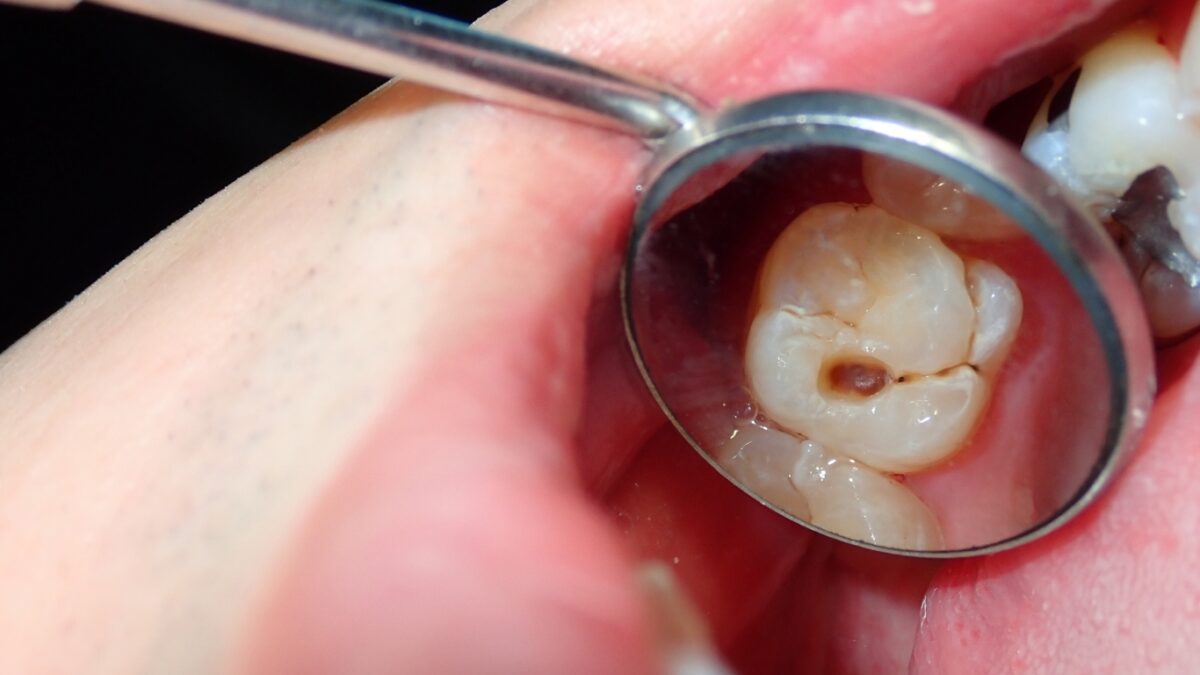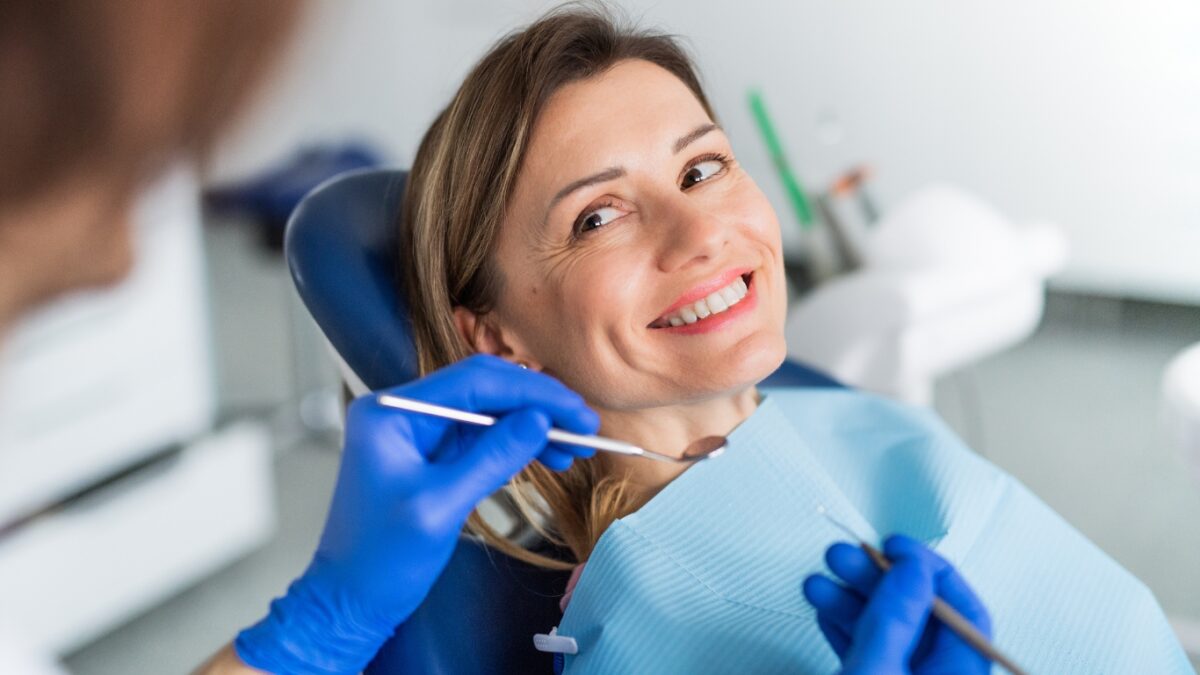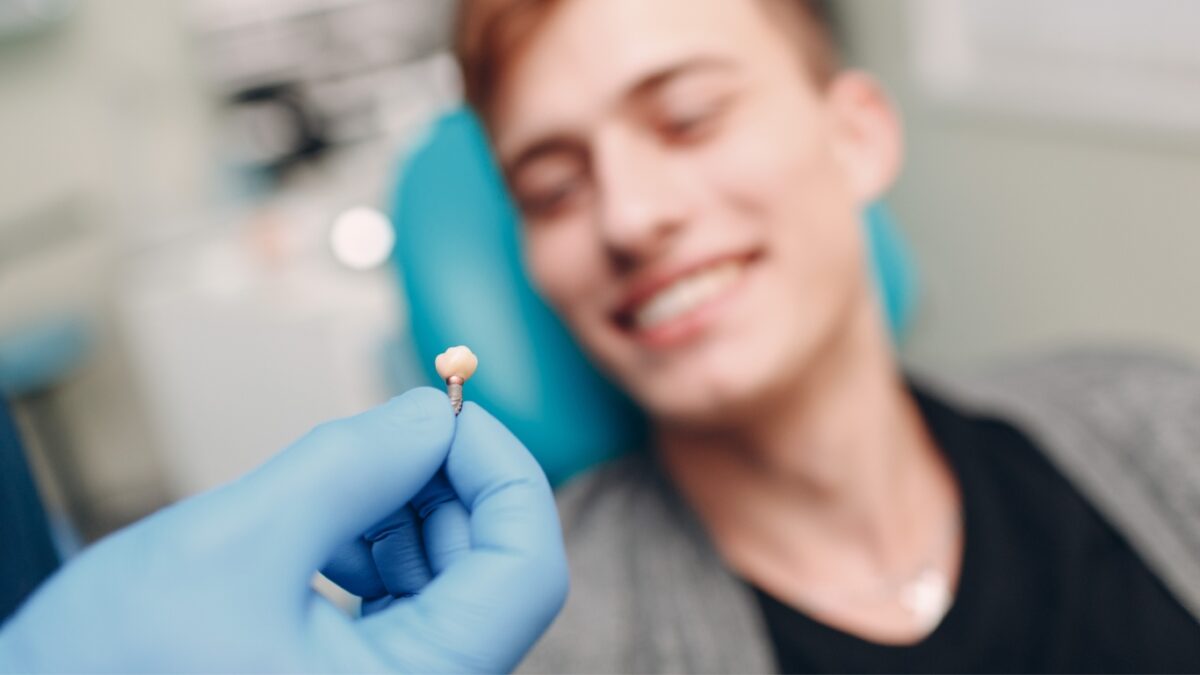Want to fix chips, gaps or stains, but don’t know whether to choose veneers or crowns? You’re not alone – many patients wrestle with this decision. While veneers and crowns are both tooth-colored restorations that can beautifully transform your smile, they work differently. As your trusted Champaign, Ohio dentists, we’re here to help you weigh the pros and cons of veneers vs. crowns. Read on as we compare the key factors, so you can decide the champion for your own smile!
Durability Differences
Let’s kick things off by looking at lifespan and durability:
- Veneers – Porcelain veneers are wafer-thin shells bonded over your natural teeth. Since some original tooth structure remains, veneers are considered semi-permanent restorations lasting 10-15 years with proper care before replacement is needed.
- Crowns – In comparison, dental crowns are permanent prosthetics that fully cap or encase the entire visible tooth down to the roots. They last even longer than veneers, generally 15-30 years or more before a new crown is required.
The winner for durability: Crowns win out here as longer-lasting full coverage restorations. But veneers enjoy a long service life as well.
Preservation of Tooth Structure
Now let’s examine how much natural tooth must be removed:
- Veneers – This is a minimally invasive procedure. Only about 0.3-0.5mm of outer enamel is reshaped before veneers are bonded over top. This ultra-conservative preparation preserves much of your natural tooth structure.
- Crowns – To fully cap the tooth, crown placement is more invasive. About 1-2mm of outer enamel must be reduced circumferentially to create room for the covering. The inner dentin layer is left intact.
The winner for preservation: Veneers claim victory here with their ultra-conservative approach leaving tooth largely intact.
Ideal Candidates
The right candidate is vital for success:
- Veneers – Since some original enamel remains, veneers work best on fairly healthy teeth needing simple cosmetic changes like slight realignment, small chips, worn edges or discoloration.
- Crowns – Crowns are preferred for teeth weakened extensively by decay, fractures or prior large restorations. They protect and reinforce what remains of the natural tooth.
The winner for candidates: It depends on your specific dental needs! For minor alignment or staining, veneers are ideal. But for weakened teeth, crowns reinforce and shield the natural tooth.
Appearance Results
Let’s compare the aesthetics:
- Veneers – Made from dental porcelain, veneers have a beautiful lifelike translucency that seamlessly matches your surrounding natural teeth. Thin veneers provide a conservative change in shape and color.
- Crowns – Made from stronger ceramic or porcelain-fused-to metal, crowns have excellent durability. But they can sometimes look slightly more opaque than natural enamel. The full coverage cap is a more dramatic change.
The winner for aesthetics: Veneers win for the most natural, conservative cosmetic enhancement. But well-crafted crowns still achieve excellent beauty.
Comfort and Sensitivity
Patients worry about pain, so how do veneers and crowns compare for comfort?
- Veneers – Because preparation only reshapes the outer protective enamel layer, veneers rarely cause pain or sensitivity. Your living inner tooth tissue remains protected and unexposed. Most patients are very comfortable with the gentle veneer process.
- Crowns – Since crown prep exposes the inner dentin layer, some sensitivity can result after treatment. Proper technique protects the tooth nerve though, so discomfort is temporary until the crown caps the tooth.
The winner for comfort: Veneers take the prize here with their minimally invasive approach that prevents sensitivity and discomfort.
Strength and Protection
Let’s examine protective capabilities:
- Veneers – While durable, thin veneer material can still chip or crack under high biting forces, requiring repair or replacement. Veneers protect against surface wear and damage but provide limited internal strength.
- Crowns – Crowns act like a tooth suit of armor against chewing forces. They provide full encasement reinforcement and protection from further cracking or decay within the natural tooth structure.
The winner for strength: Crowns are the undisputed champions for protective capabilities and internal reinforcement of weakened teeth.
Longevity Factors
What impacts how long veneers and crowns can last?
- Veneers – With good oral hygiene and avoidance of clenching, grinding, nail biting, etc., veneers can thrive 10-15 years. But fractures or leakage at the bond line may require earlier re-bonding or replacement. Regular dental visits help spot issues.
- Crowns – With proper care, crowns typically enjoy 15-30 years or more of service. But fractures are still possible over decades of heavy chewing forces. The crown margin near the gumline also risks decay if not properly maintained. Regular exams help maintain crowns.
The winner for longevity: When cared for well, crowns are built to last. But veneers also survive many years with prudent habits and checkups.
Permanence Considerations
Another factor is reversibility:
- Veneers – While long-lasting, veneers are not permanently cemented like crowns. If desired, they can be removed later and the underlying natural tooth structure remains. This provides more flexibility vs crowns.
- Crowns – In comparison, crowns fully replace the visible tooth structure down to the preparatory shave line. While crowns are not easily undone, the inner preserved tooth remains intact under the crown if needed for restorative retreatments.
The winner for permanence: Veneers win for reversibility since they are non-permanent restorations that can be removed if desired later.
Cost Considerations
And finally, the financial comparison:
- Veneers – Ranging $925-$2500 per tooth, veneers provide an affordable cosmetic solution. Costs vary based on the amount of shaping, material and number of veneers needed.
- Crowns – At $800-$3000 per crown, they are a bigger investment. Complex cases with more involved prep or materials may cost more.
The winner for cost: Veneers generally are a more budget-friendly cosmetic option for minor alignment or color issues versus crowns for severely damaged teeth. But costs for both vary widely.
An Experienced Eye Is Key
With all these variables in play, it takes an experienced, nuanced dentist to recommend the right restorative path for your unique situation and goals. Veneers and crowns both rebuild smiles beautifully when matched well to the patient. Let our Champaign experts guide you with care after a thorough assessment. We take all factors into consideration to determine if thin veneers or full crowns will optimize your oral health and smile. Trust our wisdom and technical skill – your satisfaction is our top priority!
Let Us Guide You to Your Ideal Smile Solution
As you can see, veneers and crowns each have their own pros and cons suiting different needs. There is no universal winner! The best option depends entirely on your specific dental situation and cosmetic goals. Some patients even opt for a combination of veneers and crowns to optimize form and function. Let our experienced Champaign dentists thoughtfully evaluate your needs and recommend the right restoration pathway tailored just for your one-of-a-kind smile. With our leadership, you’ll gain a stunning, natural-looking grin that’s also healthy and protected. Call us today to discuss your candidacy for veneers versus crowns!












